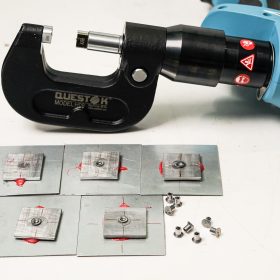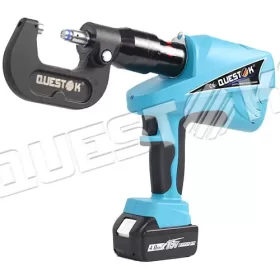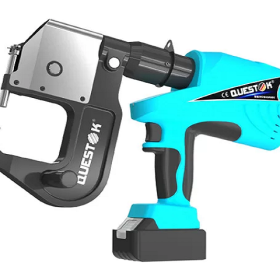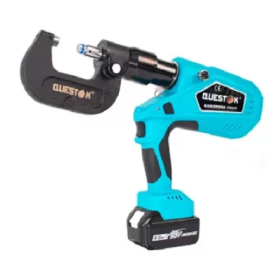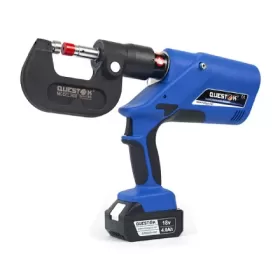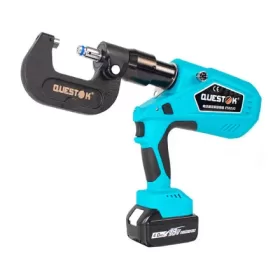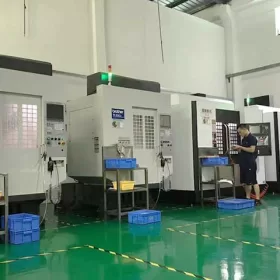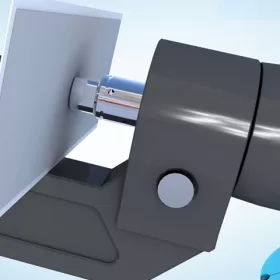Cold Riveting Machines vs. Hot Riveting- A Comprehensive Comparison
In the realm of joining metal sheets, riveting stands as a time-honored technique, offering a secure and durable bond. While various riveting methods exist, two main categories prevail: cold riveting and hot riveting. In this comprehensive comparison, we delve into the intricacies of both methods to illuminate their relative merits and limitations.
Mechanism and Process
Cold Riveting
Cold riveting employs hydraulic pressure to deform the rivet head against the workpiece, creating a cold joint. The process does not involve heating the rivet or the workpiece, ensuring that the material properties remain unaltered.
Hot Riveting
Hot riveting, on the other hand, utilizes heat to soften the rivet. The heated rivet is then inserted into pre-drilled or punched holes and hammered to form a dome-shaped head. The heat softens the rivet, allowing it to expand and fill the hole, creating a tight and secure joint.
Advantages and Disadvantages
Cold Riveting
Advantages:
Maintains material properties
No heat-related damage or distortion
Lower noise and fumes
Suitable for thin or heat-sensitive materials
Disadvantages:
Requires specialized equipment and high-pressure force
Lower joint strength compared to hot riveting
Hot Riveting
Advantages:
Superior joint strength
Faster process due to heat-softening
Can handle thicker materials
Disadvantages:
Material properties can be altered by heat
Heat-related distortion and damage
Higher noise and fumes
Requires skilled operators
Applications and Suitability
The choice between cold riveting and hot riveting depends on the specific application and the characteristics of the materials involved.
Cold riveting is ideal for situations where maintaining material integrity is crucial, such as in aerospace, electronics, and medical industries. It is also suitable for thin or heat-sensitive materials.
Hot riveting is preferred for applications requiring high joint strength and can accommodate thicker materials. It is commonly used in construction, automotive, and shipyards.
Conclusion
Cold riveting and hot riveting offer distinct advantages and disadvantages depending on the application and material requirements. Cold riveting maintains material properties, reduces heat-related distortion, and is suitable for thin or heat-sensitive materials. Hot riveting provides superior joint strength, speeds up the process, and can handle thicker materials. By understanding the key differences between these two riveting methods, manufacturers can make informed decisions and optimize their joining processes.
- Company News
- Industry News
- Tag
- Tags
-
The Advantages of Questok Rivet Guns: Precision, Efficiency, and Durability
In industrial fastening applications, the choice of tools directly impacts productivity, safety, and long-term cost-effectiveness. Questok rivet guns have emerged as a standout solution for professionals across aerospace, automotive, and construction sectors. Combining advanced engineering with user-centric design, these tools deliver unmatched performance. Below are the key advantages that make Questok rivet guns a preferred choice:
-
Rivet Gun FAQ
Rivet Gun FAQ-SPR
-
Fast Assembly and Repair With Cordless Solid Rivet Gun
Questok cordless solid rivet gun stands out as a pivotal innovation, merging portability with power to facilitate efficient and effective fastening in a myriad of applications.
-
Redifine The Role of Self-piercing Riveting Gun Machine
Self-piercing riveting adopts high-speed mechanical fastening skill that joins thin sheet materials, typically steel and aluminum alloys.
-
The Latest Innovations in Clinching Tool Design
Explore the latest innovations in clinching tool design, redefining precision, efficiency, and versatility in material joining.
-
The Application and Maintenance of Self-Piercing Rivet Guns
Delve into the applications of self-piercing rivet guns in the automotive and aerospace industries and reveal the essential maintenance practices that ensure their accuracy and efficiency.
-
Rivetless Riveting Gun for Ventilation Duct Projects
The ventilation duct rivetless gun is a tool for riveting ventilation ducts without rivets.
-
Guide to Using Self-Piercing SPR Riveting Gun
In the automotive industry, self-piercing SPR (Self-Piercing Rivet) riveting guns are commonly used for joining metal components in vehicle bodies, including BMW vehicles.
-
Rivet Gun FAQ
Rivet Gun FAQ-SPR
-
Versatile Fastening- Applications of the Handheld Rivet Gun Across Industries
In the realm of fastening, the handheld rivet gun stands as a testament to ingenuity and versatility. Its ability to effortlessly join materials with sheer strength and permanence has revolutionized manufacturing and construction processes, leaving an enduring mark on diverse industries. Aerospace: Where precision and reliability are paramount, the rivet gun shines. In aircraft assembly, […]
-
Time-Saving Tools- Speeding Up Projects with Electric Blind Rivet Guns
In the whirlwind of project deadlines, every minute counts. But what if there was a tool that could dramatically reduce assembly time, giving you an edge in the race against the clock? Enter the electric blind rivet gun: your secret weapon for lightning-fast and effortless riveting. Electric blind rivet guns are the ultimate time-savers for […]
-
Streamlining Fastening- How an Electric Blind Rivet Gun Enhances Efficiency
Introduction In the realm of manufacturing and assembly, fastening plays a crucial role in securing components and ensuring structural integrity. Traditional manual rivet guns, while reliable, are often time-consuming and labor-intensive. The advent of electric blind rivet guns has revolutionized the fastening process, significantly enhancing efficiency and productivity. This article delves into the benefits of […]
-
Top Trends in Electric Rivetless Clinching Guns
In the realm of fastening technology, electric rivetless clinching guns have emerged as a revolutionary solution for a wide range of industrial applications. These advanced tools offer several преимущества and capabilities, revolutionizing the way businesses approach their fastening needs. Adoption of Brushless Motors Brushless motors have gained significant traction in electric rivetless clinching guns due […]
-
Top Features and Benefits of Universal Self-Piercing Riveting Guns
In the realm of metalworking, precision and efficiency are paramount. Universal self-piercing riveting guns, often referred to as self-pierce riveting guns, embody these qualities, offering remarkable benefits for various applications. These innovative tools feature technologically advanced functions that enhance productivity, reliability, and overall performance, making them indispensable in industries such as aerospace, automotive, construction, and […]
-
The Role of Automation in Electric Rivetless Clinching
Electric rivetless clinching (ERC) is a lightweight joining process that eliminates the need for rivets or other fasteners. This can lead to significant cost savings and increased production efficiency. Automation plays a critical role in ERC, enabling high-speed and high-volume production. Automated Feed Systems Automated feed systems are used to accurately position the two workpieces […]
-
Why Choose a Universal Self-Piercing Riveting Gun for Your Projects?
In the realm of construction and fabrication, riveting guns stand as indispensable tools for creating secure and robust connections. Among the various types available, universal self-piercing riveting (SPR) guns have emerged as a game-changer due to their versatility and efficiency. This article will delve into the compelling reasons why choosing a universal self-piercing riveting gun […]
